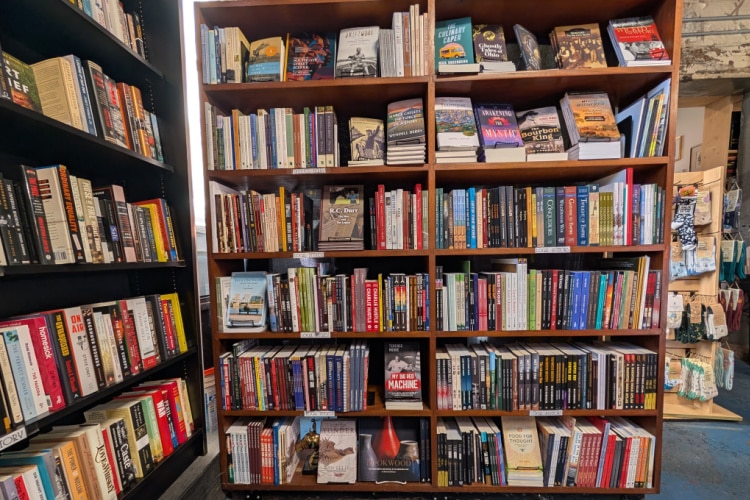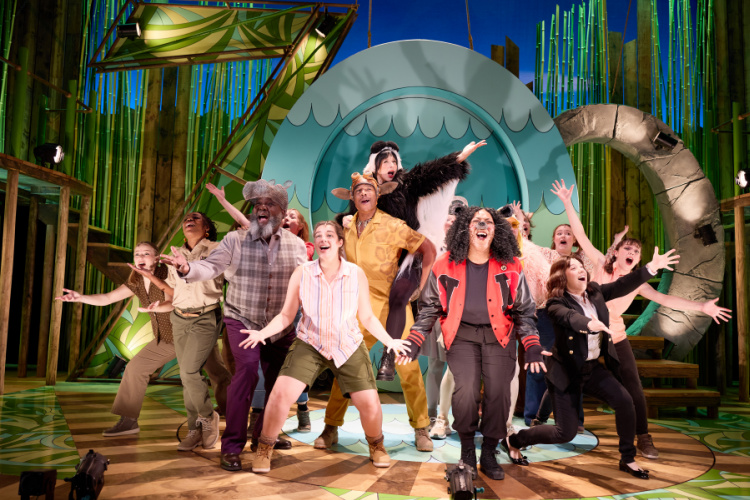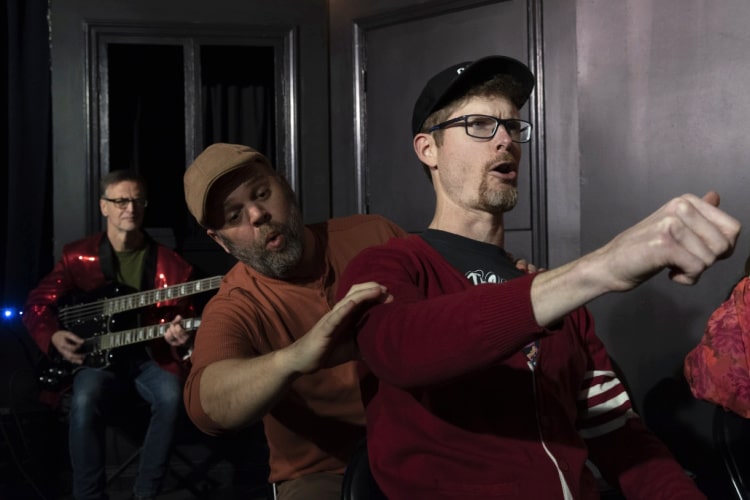The view from Eden Park is global
Director Aaron Betsky finds a global perspective for the Cincinnati Art Museum no stretch at all as he positions one of the city’s most treasured institutions squarely into its next phase of development and growth.

 Director Aaron Betsky finds a global perspective for the Cincinnati Art Museum no stretch at all. “One of the great things about Cincinnati is that it’s been a focal point in the global economy for almost two centuries,” he says, and proceeds to link the business community and the Art Museum in ways visceral to each.
Director Aaron Betsky finds a global perspective for the Cincinnati Art Museum no stretch at all. “One of the great things about Cincinnati is that it’s been a focal point in the global economy for almost two centuries,” he says, and proceeds to link the business community and the Art Museum in ways visceral to each.
“Art museums show us where we’ve been and where we’re going, that’s become a mantra of mine,” he tells us in his sunny corner office which will become, if all goes well, exhibition space for a collection bursting at the seams. The master plan for the museum’s renovation and expansion moves all offices into the former Art Academy building adjoining the museum. Betsky, appointed CAM director two years ago, previously headed the Netherlands Architecture Institute in Rotterdam.
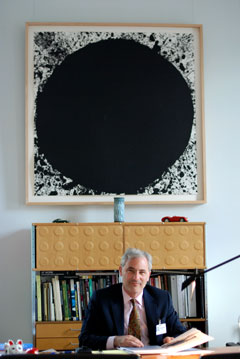 “Cincinnati started as a trading city,” he continues, “and now it’s home to the largest consumer goods company in the world, the largest department store company in the world, and the largest supermarket chain in North America. It’s a hub in the international network of commerce and culture because of the kind of companies and businesses here.”
“Cincinnati started as a trading city,” he continues, “and now it’s home to the largest consumer goods company in the world, the largest department store company in the world, and the largest supermarket chain in North America. It’s a hub in the international network of commerce and culture because of the kind of companies and businesses here.”
The nature of those businesses has a unique bearing on the presence of an art museum here, Betsky feels. “These companies are about converting raw materials into packaged goods, into products bought because of the way they look. I think the whole notion of converting a particular place into images that can travel around the world is built into the very DNA of Cincinnati as a city and a community.”
China Design Now, at the Museum October 18 through January 3, 2009, recognizes the explosion of Chinese culture in graphic design, fashion, and architecture as a vibrant element in today’s world and provides, in the most contemporary fashion, a global reflection of the city’s interests. “A show that will reverberate with China Design Now will be Decoded Messages, in the fall of 2009. It explores the meaning of animals in Chinese painting going back almost a thousand years, and shows how those symbols have developed,” the director adds.
The city can enjoy a certain reflected renown from Betsky’s appearance on a world stage as director of the 11th International Architecture Biennale, on view September 14 through November 23 in Venice. We ask about the meaning of the title, Out There: Architecture Beyond Building and also how, even in this global society, he could be director of that as well as the CAM?
“I couldn’t have done it five years ago,” he says. “Advances in technology for e-mails, phone calls, teleconferencing made possible handling it in the mornings, the evenings and the weekends. It all had to be done very, very fast as the appointment wasn’t made until February. So there were certain things I couldn’t do, but the good news was that I couldn’t waste a lot of time!”
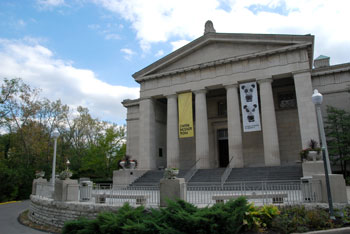 “The thesis was deceptively simple,” he goes on. “We asked architects to create a series of experiments, to try to represent architecture as not solving problems or making grand proposals but to show themselves pushing and pulling at what architecture might be.”
“The thesis was deceptively simple,” he goes on. “We asked architects to create a series of experiments, to try to represent architecture as not solving problems or making grand proposals but to show themselves pushing and pulling at what architecture might be.”
At the museum, Betsky has expanded staff and reorganized some departments, making new hires from New York and elsewhere as well as – he is quick to point out – adding more local people to the mix. “The main area that needed attention was development. We brought in Patricia Hines from New York about six months ago.” Hines comes to the CAM with over twenty years experience in development for major New York City art museums. Stephen Jaycox, currently based in San Francisco, will become deputy director of Creative Services and External Relations in early November.
Benedict Luca, curator of the reorganized department of European Painting, Sculpture and Drawing, came to the CAM last year from Washington D.C.’s National Gallery and James Crumb has just come on as curator of the newly designated department of Photography. “He’s fantastic,” Betsky says. “He comes to us from New York, but is originally from Indiana so is returning to the Midwest.”
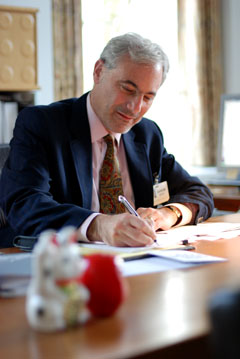 Betsky is pleased with the reorganized education department, now called Learning and Interpretation, and its programs tailored to different groups. “Art is one of the most intense ways people come together. Groups, including corporations, students, organizations like Art For Life, use it to generate discussion,” he says. Art, Inc. uses the collection to motivate corporate groups in problem solving and team building. Art for Life, on the other hand, finds art helps estranged fathers reunite with their children. Clearly, the uses of the collection are manifold. “We believe our art is the community’s evidence of shared culture, and we try to make it as clear as possible how that art can be effective in the community.”
Betsky is pleased with the reorganized education department, now called Learning and Interpretation, and its programs tailored to different groups. “Art is one of the most intense ways people come together. Groups, including corporations, students, organizations like Art For Life, use it to generate discussion,” he says. Art, Inc. uses the collection to motivate corporate groups in problem solving and team building. Art for Life, on the other hand, finds art helps estranged fathers reunite with their children. Clearly, the uses of the collection are manifold. “We believe our art is the community’s evidence of shared culture, and we try to make it as clear as possible how that art can be effective in the community.”
The Cincinnati Art Museum, inspired by the arts and crafts movement of the 19th century, was always intended to provide practical inspiration to the making of things. “The Museum collected work from all over the world – Asia, Europe, the American West, – material that came together in Cincinnati so that, for one thing, Cincinnati artists and manufacturers might transform it for the future,” Betsky says. These early motives can be seen at greatest depth in the Cincinnati Wing. “With the building itself, the Cincinnati Wing is our anchor and great strength. But we’ve always been very international in collecting. The English portraits of the 18th and 19th centuries, the marvelous things from Petra, tea services from Japan. Exhibition schedules, however, have sometimes been Euro-centric although the world is becoming much more diffuse. One of my cherished plans is for an exhibition looking at historic relationships between Cincinnati and Japan. Other than Boston, we had the strongest United States ties to Japan all through the 19th century. A great deal of trading, Rookwood, Lafcadio Hearn.”
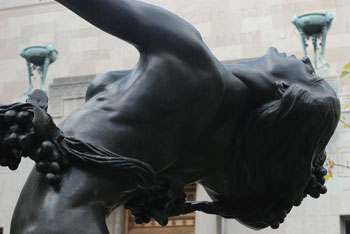 If Betsky sees the CAM as part of the global culture, he is also committed to its remaining rooted in Cincinnati. “We try to think of the art museum as an engine bringing people and art together. We want to bring clarity to everything from marketing to communication to exhibition design, to everything bringing you and the art together. Eventually there will be a strong digital component, a task I’ve asked a group within the museum to think about, to consider information as a cloud hovering over the art museum that can be accessed in the museum or from afar. We’re beginning experiments with that. We’ll be projecting rather than just printing material out and putting it on the wall. We’re rethinking the web site. We want to understand what can be done with bricks and mortar and what can be done with bits and bites.”
If Betsky sees the CAM as part of the global culture, he is also committed to its remaining rooted in Cincinnati. “We try to think of the art museum as an engine bringing people and art together. We want to bring clarity to everything from marketing to communication to exhibition design, to everything bringing you and the art together. Eventually there will be a strong digital component, a task I’ve asked a group within the museum to think about, to consider information as a cloud hovering over the art museum that can be accessed in the museum or from afar. We’re beginning experiments with that. We’ll be projecting rather than just printing material out and putting it on the wall. We’re rethinking the web site. We want to understand what can be done with bricks and mortar and what can be done with bits and bites.”
The Cincinnati Art Museum, looking backward as museums do, commits just as firmly to showing us where we’re going.
Jane Durrell has known the Cincinnati Art Museum from inside and out. She was art critic for the Cincinnati Post before becoming CAM press officer, a post she held for a number of years. Since leaving the museum she has contributed articles on the arts and on travel to various publications.
Photography by Scott Beseler
Director Aaron Betsky
Museum Facade
Statue in the courtyard at CAM
To receive Soapbox free every week click here.

